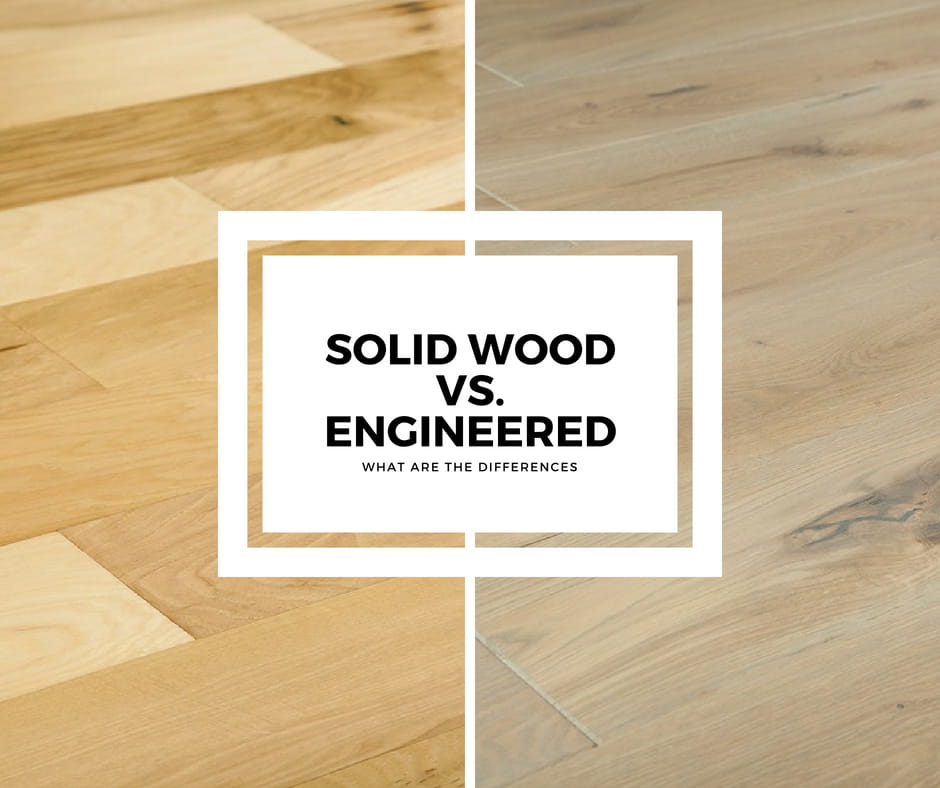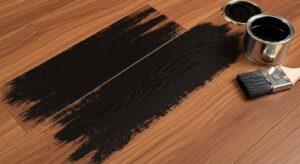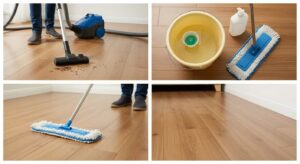Hardwood floors are a timeless and popular choice for homeowners due to their durability, elegance, and natural beauty. However, not all hardwood flooring is created equal. When examining your flooring, you may wonder: Is it solid hardwood or engineered hardwood? Knowing the difference is essential for maintenance, refinishing, and understanding the longevity of your floors.
Today, we will be discussing how to identify whether the hardwood flooring is solid or engineered.
How to Tell If Your Hardwood Floor Is Solid or Engineered
Here are several practical ways to determine which type of hardwood you have:
Check an Exposed Edge
If you have access to a floorboard edge, such as at a vent, under a baseboard, or in a closet, you can get a good look at the flooring’s cross-section. This is the most reliable method.
What to look for:
- Solid hardwood: The grain pattern continues through the entire thickness of the plank. You won’t see any layering.
- Engineered hardwood: You’ll see multiple layers. The top veneer of real hardwood will be clearly visible, with plywood or HDF layers underneath.
Tip: Use a flashlight and a magnifying glass if needed to inspect small gaps or remove trim.
Look at the Plank Thickness
Measure the total thickness of the floorboards if possible. You can do this in an area where a transition strip or baseboard is missing or removable.
- Solid hardwood is usually about 3/4 inch thick.
- Engineered hardwood typically ranges from 3/8 inch to 5/8 inch thick.
Note: Some high-end engineered floors can be as thick as solid wood, so thickness alone isn’t definitive.
Examine the Underside
If you’re replacing a board or have loose planks (like in a floating floor), flip one over.
- Solid hardwood: The underside will look identical to the top in terms of grain and material.
- Engineered hardwood: The underside will reveal a different material, often plywood or fiberboard, with a clear contrast from the top veneer.
Observe the Floor’s Behavior with Humidity
Over time, wood reacts to changes in moisture and temperature.
- Solid hardwood: Prone to expansion and contraction. You may see seasonal gaps, cupping, or crowning.
- Engineered hardwood: More stable and better resists these fluctuations.
If your floor has shown minimal seasonal movement, it might be engineered.
Check for Floating Installation
Solid hardwood is almost never installed as a floating floor. If your floor seems to “float” (you can feel slight movement or hear a hollow sound), it’s probably engineered, especially if installed over concrete.
- Solid hardwood: Typically nailed or stapled.
- Engineered hardwood: Can be glued, nailed, stapled, or floated.
Check Flooring Documentation or Contact Builder
If your home is newer or you have access to past renovations, check the flooring specs, invoices, or product labels. Builders or flooring contractors may also have records indicating the type of flooring installed.
Also Read: What Are the Different Patterns That Hardwood Floors Can Be Installed In?
Why It Matters: Solid vs. Engineered
Identifying your flooring type is more than just a curiosity—it has practical implications.
Refinishing and Longevity
- Solid hardwood: Can usually be refinished 4–6 times over decades. This allows you to restore its appearance or change the stain.
- Engineered hardwood: Can sometimes be refinished once or twice, but only if the top veneer is thick enough (usually at least 2mm). Lower-end versions can’t be sanded at all.
Moisture Resistance
- Solid hardwood: Not ideal for moisture-prone areas like basements or bathrooms.
- Engineered hardwood: Handles humidity better and is suitable for more environments.
Cost
- Solid hardwood: More expensive to purchase and install.
- Engineered hardwood: More budget-friendly and versatile.
Environmental Impact
Engineered hardwood often uses fewer slow-growing hardwoods and more sustainable materials like plywood, which can make it a more eco-conscious option.
Common Myths to Avoid
Myth 1: Engineered wood isn’t real wood.
Fact: Engineered wood has a real hardwood veneer—it just has a layered core.
Myth 2: You can’t refinish engineered wood.
Fact: Many engineered floors with thicker veneers (2mm or more) can be sanded and refinished at least once.
Myth 3: Engineered floors are always better for basements.
Fact: While they handle humidity better, they still need to be protected from standing water and must be properly installed.
What If You’re Still Unsure?
If you’ve gone through the steps above and still can’t identify your floor type confidently, you can:
- Call a flooring professional: They can inspect your floor and provide a quick answer.
- Use a moisture meter: Some models differentiate between solid and engineered wood based on how moisture travels through the material.
- Check a sample: If you’re willing to remove a small piece, take it to a flooring supplier for identification.
Want to Install Hardwood Flooring?
Whether you’re upgrading your home with solid hardwood or exploring the versatility of engineered wood, Floorika Fine Hardwood is your trusted partner for premium hardwood flooring and expert installation. We offer a wide selection of high-quality wood species, finishes, and styles, paired with professional guidance to help you choose the right fit for your space.




